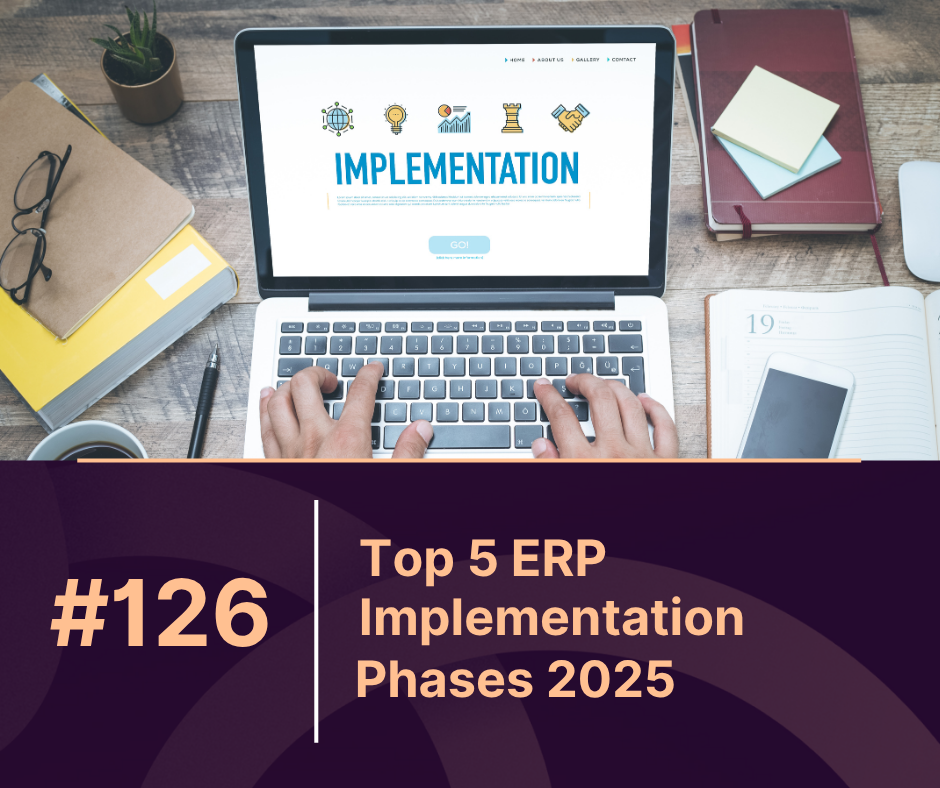Overview
Implementing an Enterprise Resource Planning (ERP) system can transform your business operations—but only if done right. Understanding the ERP implementation phases is critical for ensuring a smooth transition, minimizing risks, and achieving long-term ROI. This guide breaks down the top 5 ERP implementation phases that every business must know to ensure successful deployment and sustainable results.
What Are ERP Implementation Phases?
ERP implementation phases refer to the structured stages businesses follow to plan, deploy, and optimize their ERP system. These stages ensure proper alignment between business goals, software capabilities, and end-user adoption.
According to Deloitte, 75% of ERP implementations exceed their timelines or budgets due to poor planning and lack of phase-specific strategies. By understanding each phase, companies can better manage expectations, mitigate risks, and streamline success.
Top 5 ERP Implementation Phases
1. Planning and Requirement Gathering
Objective: Define goals, scope, timeline, and team roles.
This phase involves setting up a project team, identifying key stakeholders, and documenting business requirements. Planning is crucial—rushed projects often lead to costly missteps.
Keywords used: ERP project planning, ERP strategy, ERP requirements
2. System Design and Customization
Objective: Align ERP capabilities with business workflows.
Here, your team works with vendors to configure the system architecture, customize modules, and ensure integration with existing systems. Clear documentation and workflow mapping are essential to avoid scope creep.
3. Development and Data Migration
Objective: Build the system and migrate data accurately.
This is where the ERP is built according to specifications. Existing business data is cleaned, validated, and transferred into the new system—often one of the most complex tasks in ERP implementation phases.
4. Testing and Training
Objective: Ensure functionality and user adoption.
Extensive testing (unit, integration, and user acceptance testing) is conducted. Simultaneously, employees receive training to ensure smooth day-to-day operations post-go-live.
5. Go-Live and Post-Implementation Support
Objective: Launch the system and provide ongoing support.
Once everything checks out, it’s time to go live. However, post-implementation support, bug fixes, and feedback loops are just as critical to success as the launch itself.
Numeric Overview of ERP Implementation Phases
| Phase | Primary Focus | Typical Duration (Weeks) | Risk Level (1-10) |
|---|---|---|---|
| Planning & Requirements | Goal setting, scope, timeline | 4–6 | 7 |
| System Design & Customization | Workflow alignment, integrations | 6–10 | 6 |
| Development & Data Migration | Build system, clean data | 8–12 | 8 |
| Testing & Training | QA testing, employee readiness | 4–6 | 5 |
| Go-Live & Support | Launch, troubleshoot, feedback | 2–4 | 9 |
Data source: Panorama Consulting Solutions ERP Report 2024
Why Understanding ERP Implementation Phases Matters
Misunderstanding or skipping any ERP implementation phase can lead to:
-
Increased project costs
-
Low employee adoption
-
System downtime
-
Delayed ROI
In contrast, businesses that follow structured ERP implementation phases report a 45% higher success rate and improved cross-departmental efficiency.
Conclusion
Successfully implementing an ERP system isn’t just about choosing the right software it’s about following the right process. By understanding the top 5 ERP implementation phases, businesses can reduce risk, improve outcomes, and fully leverage their ERP investment.
From planning to post-go-live support, each phase plays a vital role in shaping the future of your digital transformation journey. Don’t treat ERP as just another IT upgrade it’s a strategic asset that demands a disciplined approach.
FAQs
Q1: What is the most important ERP implementation phase?
While all are important, planning is considered the foundation. Poor planning leads to cascading issues across all other phases.
Q2: How long does a typical ERP implementation take?
On average, small to mid-sized businesses take 4–6 months. Larger enterprises may take 12–18 months.
Q3: Can we skip customization to speed up ERP implementation?
Skipping customization may reduce time but often results in poor user fit. Balance is key.
Q4: How do I ensure successful data migration?
Clean, validate, and test your data repeatedly before moving it to the live environment.
Q5: Who should be involved in ERP implementation?
Involve IT, department heads, finance, HR, and an executive sponsor to align all functions.



